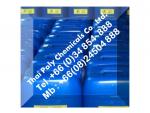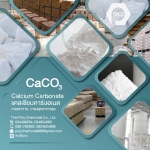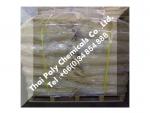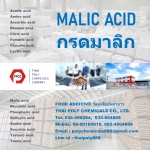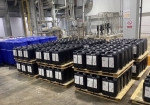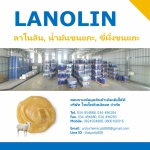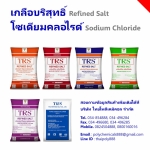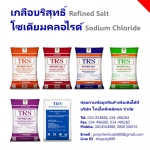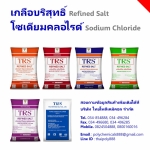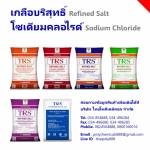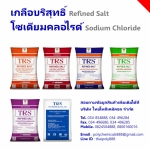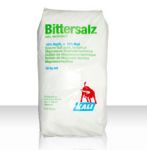กรดแอซีติก, กรดแอซิติก, กรดอะซิติก, แอซิติกแอซิด, อะซิติกแอซิด, กรดเอทาโนอิก |
฿1 |
|
ชื่อผู้ประกาศ : Thailandchemicals เบอร์โทรศัพท์ : 034854888, 034496284 โทรศัพท์มือถือ : 0824504888, 0800160016 ที่อยู่ : 36/5 ม.9 ต.นาดี อ.เมืองสมุทรสาคร ร้าน Thailand Chemicals |
นำเข้าและจำหน่าย กรดแอซีติก,
กรดแอซิติก, กรดอะซิติก, แอซิติกแอซิด, อะซิติกแอซิด, กรดเอทาโนอิก สอบถามข้อมูลเพิ่มเติมได้ที่
กรดอะซิติก,
อะซิติกแอซิด, Acetic
Acid
กรดน้ำส้ม
หรือ กรดแอซีติก
(อังกฤษ: acetic acid) เป็นสารประกอบเคมีอินทรีย์ชนิดหนึ่งที่มีอยู่ในน้ำส้มสายชู
(ไม่ใช่พืชตระกูลส้มซึ่งให้กรดซิตริก) มีรสเปรี้ยวและกลิ่นฉุน กรดชนิดนี้มีฤทธิ์กัดกร่อน ไอของกรดสามารถทำให้ตาและจมูกระคายเคือง แต่ก็ยังมีฤทธิ์เป็นกรดอ่อนหากละลายน้ำ ซึ่งมีประโยชน์มากในการขจัดตะกรันในท่อน้ำ ในด้านอุตสาหกรรมอาหาร
กรดอะซิติก
(C2H4O2)
เป็นของเหลวใสไม่มีสี มีกลิ่นฉุน แสบจมูก ระเหยได้ น้ำหนักโมเลกุล 60.05
จุดเดือด 118 องศาเซลเซียส จุดเยือกแข็งที่ 17
องศาเซลเซียส ความถ่วงจำเพาะ 1.05 ความดันไอ 11
มม.ของปรอทที่ 20 องศาเซลเซียส ละลายน้ำได้ดี
มีความเสถียร กรดอะซิติกบริสุทธิ์ เรียกว่า กรดน้ำส้มล้วน หรือกรดกลาเซียอะซิติก (Glacial
acetic acid) ซึ่งมีลักษณะเป็นผลึกที่อุณหภูมิต่ำกว่า 17 องศาเซลเซียส การเจอจางกรดด้วยน้ำ ได้น้ำส้มสายชูสำหรับปรุงอาหาร ซึ่งอาจได้จากการหมัก
มีกลิ่นหอมและไม่มีอันตรายจากสารปนเปื้อน ในสมัยโบราณมีการนำกรดนี้มาใช้โดยหมักจากไวน์หรือเหล้าต่อจนมีรสเปรี้ยว แล้วทำปฏิกิริยากับคาร์บอนมอนอกไซด์ อีกครั้งหนึ่งจนได้กรดอะซิติก กรดอะซิติก ใช้ในการผลิตพลาสติก อุตสาหกรรม สีย้อมผ้า ยาฆ่าแมลง ยาแอสไพริน เส้นใยสังเคราะห์ สารโพลีเมอร์ และกาว เป็นต้น อันตรายต่อสุขภาพและสิ่งแวดล้อม กรดอะซิติก
กรดอะซิติกเป็นกรดริดิวซ์อย่างอ่อน
เป็นสารประกอบเคมีอินทรีย์ชนิดหนึ่งที่มีอยู่ในน้ำส้มสายชู ไอของกรดสามารถทำให้ตาและจมูกระคายเคือง แต่ก็ยังมีฤทธิ์เป็นกรดอ่อนหากละลายน้ำ ซึ่งมีประโยชน์มากในการขจัดตะกรันในท่อน้ำ ในด้านอุตสาหกรรมอาหาร กรดอะซีติกใช้เป็นวัตถุเจือปนอาหารเพื่อควบคุมความเป็นกรด กรดอะซิติกเรียกเต็มว่า ซึ่งเป็นตัวที่ทำให้เกิดรสเปรี้ยวในการปรุงรส
อะเซติก
แอนไฮดรายด์ (Acetic
anhydride: (CH3CO)2O)
อะเซติก
แอนไฮดรายด์ เป็นของเหลวไสไม่มีสี มีจุดเดือด 139.8 ?C จุดหลอมเหลว -73.1
?C ความหนาแน่น 1.082 g/cm3 ละลายน้ำได้ดี เป็นสารที่ใช้ในโรงงานผลิตพลาสติก
และยังใช้เป็นส่วนประกอบในน้ำส้มสายชู สารกลุ่มแอนไฮดรายด์ส่วนใหญ่ใช้เป็นสารตั้งต้นเพื่อทำปฏิกิริยาให้สารประกอบอื่น เช่น เป็นสารตั้งต้นเมื่อทำปฏิกิริยากับสารสกัดจากฝิ่นจะได้เฮโรอีน จึงถูกกำหนดเป็นสารถูกควบคุมตั้งแต่อนุสัญญาสหประชาชาติว่าด้วยการต่อต้านการลักลอบค้ายาเสพติดและวัตถุออกฤทธิ์ต่อจิตและประสาท แอนไฮดรายด์มีฤทธิ์กัดกร่อนเหมือนกรด เป็นอันตรายเมื่อสูดดมและกลืนกินทำให้เกิดแผลไหม้ ทำปฏิกิริยารุนแรงกับน้ำ จึงควรเก็บให้ห่างจากความร้อนและเปลวไฟ
ชื่อ
acetic
acid อะแซติกแอซิด
ชื่อพ้อง
ethanoic
acid, ethylic acid, methanecarboxylic acid, vinegar acid, glacial acetic acid
(สารละลาย acetic acid ที่มี acetic acid มากกว่า 10% แต่ไม่มากกว่า 80%)
CH3COOH กรดน้ำส้ม หรือ กรดแอซีติก : acetic
acid เป็นสารประกอบเคมีอินทรีย์ชนิดหนึ่งที่มีอยู่ในน้ำส้มสายชู
คือให้รสเปรี้ยวและกลิ่นฉุน กรดแอซีติก ซึ่งมีประโยชน์มากในการขจัดตะกรันในท่อน้ำ
น้ำส้มสายชู เป็นเครื่องปรุงรสอาหาร (seasoning) ที่เรารู้จักและใช้กันอย่างแพร่หลายในชีวิตประจำวัน คำว่า vinegar มาจากคำว่า vin aigre เป็นภาษาฝรั่งเศษ แปลว่า ไวน์เปรี้ยวเพราะ น้ำส้มสายชู ในสมัยเริ่มต้น ได้จากการหมัก (fermentation) เอทธิลแอลกอฮอล์ในไวน์ด้วยแบคทีเรียในกลุ่ม Acetobacter และ Gluconobacterให้ได้กรดน้ำส้ม (actetic acid) ซึ่งมีรสเปรี้ยว กรดน้ำส้ม (Acetic acid) มีคุณสมบัติที่ให้รสเปรี้ยวเพราะไม่มีพิษต่อร่างกาย ใช้หมักดองถนอมอาหาร (food preservation) ด้วยการดอง (pickling) และใช้ปรับอาหารให้เป็นกรด (acidification)
ประเภทของน้ำส้มสายชู
น้ำส้มสายชูจัดเป็นอาหารที่กำหนดคุณภาพหรือมาตรฐาน
ตามประกาศกระทรวงสาธารณสุข (ฉบับที่ 204) พ.ศ.2543 เรื่อง น้ำส้มสายชู ประเภทของน้ำส้มสายชูนั้นแบ่งออกเป็น 3 ชนิด ได้แก่
1
. น้ำส้มสายชูหมัก คือน้ำส้มสายชูที่ได้จากการหมัก เมล็ดธัญพืชเช่น
ข้าวข้าวโพด ผลไม้ เช่น สับปะรด แอ๊ปเปิ้ล หรือ น้ำตาลกากน้ำตาล (molass)
วัตถุดิบที่มี
น้ำตาล (sugar)
เช่น ผลไม้ต่างๆ เป็นอาหารของยีสต์ได้โดยตรง ส่วน
วัตถุดิบที่มีสตาร์ซ (starch) เช่น
ข้าวจะต้องเปลี่ยนเป็นโมเลกุลของน้ำตาลก่อน
การผลิตน้ำส้มสายชูหมัก
เป็นการหมัก สองขั้นตอน คือ การหมักน้ำตาล ให้เกิดแอลกอฮอล์ (alcoholic
fermentation) โดยใช้ยีสต์ (yeast) ตามด้วยการหมักแอลกอฮอล์ให้เกิดกรดอะซิกติก
(acetic acid fermentation) ด้วยแบคทีเรียในกลุ่ม Acetobacter
และ Gluconobacterในภาวะที่มีออกซิเจน
น้ำส้มสายชูที่หมัก จะใส ไม่มีตะกอน ยกเว้นตะกอนที่เกิดขึ้นตามธรรมชาติ มีกลิ่นหอมตามกลิ่นของวัตถุดิบ มี รสชาติดี มีรสหวานของน้ำตาลที่ตกค้างมีกลิ่นของวัตถุดิบที่ใช้ในการหมัก ความเข้มข้นขึ้นอยู่กับ ชนิดและปริมาณน้ำตาลของวัตถุดิบที่ใช้ในการหมัก
2.
น้ำส้มสายชูกลั่น
เป็นผลิตภัณฑ์ที่ได้จากการนำเอทธิลอัลกอฮอล์กลั่นเจือจาง (Dilute Distilled
Alcohol) มาหมักกับเชื้อน้ำส้มสายชู หรือเมื่อหมักแล้วนำไปกลั่น (distillation)
หรือได้จากการนำน้ำส้มสายชูหมักมากลั่น
น้ำส้มสายชูกลั่นจะต้องมีลักษณะใส ไม่มีตะกอนและมีปริมาณกรดน้ำส้มไม่น้อยกว่า 4%
3.
น้ำส้มสายชูเทียม เป็นผลิตภัณฑ์ที่ได้จากการนำเอากรดน้ำส้ม (Acetic
acid) ซึ่งสังเคราะห์ขึ้นทางเคมี
เป็นกรดอินทรีย์มีฤทธิ์เป็นกรดอ่อนมีความเข้มข้นประมาณ 95 % มาเจือจางจนได้ปริมาณกรด
4 - 7% ลักษณะใส ไม่มีสี กรดน้ำส้มที่นำมาเจือจางจะต้องมีความบริสุทธิ์สูงเหมาะสมที่จะนำมาเป็นอาหารได้และน้ำที่ใช้เจือจางต้องเหมาะสมที่จะใช้ดื่มได้
การควบคุมคุณภาพหรือมาตรฐานน้ำส้มสายชูน้ำส้มสายชูหมักหรือน้ำส้มสายชูกลั่น
ต้องมีคุณภาพหรือมาตรฐาน ดังต่อไปนี้
1.
มีกรดน้ำส้มไม่น้อยกว่า 4 กรัม ต่อ 100 มิลลิลิตร ที่ 27 องศาเซลเซียส2. ตรวจพบสารปนเปื้อนได้ไม่เกินปริมาณกำหนด ดังต่อไปนี้ - สารหนู ไม่เกิน 1 มิลลิกรัม ต่อน้ำส้มสายชู 1 กิโลกรัม - ตะกั่ว
ไม่เกิน 1 มิลลิกรัม ต่อน้ำส้มสายชู 1
กิโลกรัม - ทองแดงและสังกะสี ไม่เกิน 10 มิลลิกรัม
ต่อน้ำส้มสายชู 1 กิโลกรัม - เหล็ก ไม่เกิน 10 มิลลิกรัม ต่อน้ำส้มสายชู 1 กิโลกรัม3. ไม่มีกรดน้ำส้มที่มิได้มาจากการผลิตน้ำส้มสายชูหมักหรือน้ำส้มสายชูกลั่น4.
ไม่มีกรดกำมะถัน (Sulfuric acid) หรือกรดแร่อิสระอย่างอื่น5.
ใสไม่มีตะกอน เว้นแต่น้ำส้มสายชูหมักตามธรรมชาติ6. ไม่มีหนอนน้ำส้ม (Vinegar Eel) 7. ใช้น้ำสะอาดเป็นส่วนผสม8.
ให้ใช้วัตถุเจือปนอาหาร (Food Additive) ได้
ดังต่อไปนี้ - ซัลเฟอร์ไดออกไซด์ (sulfur dioxide) ไม่เกิน 70 มิลลิกรัม ต่อน้ำส้มสายชู 1 กิโลกรัม -
กรดแอล-แอสคอร์บิก (L- ascorbic acid) ไม่เกิน 400 มิลลิกรัม ต่อน้ำส้มสายชู 1 กิโลกรัม9. มีแอลกอฮอล์ตกค้าง (Residual alcohol) ไม่เกิน 0.5
%10. การแต่งสี ให้ใช้น้ำตาลเคี่ยวไหม้หรือสีคาราเมล (caramel)
น้ำส้มสายชูเทียม
ต้องมีคุณภาพหรือมาตรฐาน ดังต่อไปนี้
1.
มีกรดน้ำส้มไม่น้อยกว่า 4 กรัม และไม่เกิน 7 กรัม ต่อ 100 มิลลิลิตร ที่ 27 องศาเซลเซียส2. ตรวจพบสารปนเปื้อนได้ไม่เกินปริมาณที่กำหนด
ดังต่อไปนี้- สารหนู ไม่เกิน 1 มิลลิกรัม ต่อน้ำส้มสายชู 1 กิโลกรัม- ตะกั่ว ไม่เกิน 1 มิลลิกรัม
ต่อน้ำส้มสายชู 1 กิโลกรัม- ทองแดงและสังกะสี ไม่เกิน 10 มิลลิกรัม ต่อน้ำส้มสายชู 1 กิโลกรัม- เหล็ก
ไม่เกิน 10 มิลลิกรัม ต่อน้ำส้มสายชู 1
กิโลกรัม3. ใสไม่มีตะกอน4. ไม่มีกรดกำมะถันหรือกรดแร่อิสระอย่างอื่น5.
ไม่ใช้สี6. ไม่มีการแต่งกลิ่นหรือรส7. ใช้น้ำสะอาดเป็นส่วนผสม
น้ำส้มสายชูปลอมได้จากนำกรดน้ำส้มชนิดเข้มข้น
(Glacial
acetic acid) หรือ "หัวน้ำส้ม" ซึ่งปกติจะใช้ในอุตสาหกรรมฟอกหนัง
สิ่งพิมพ์ สิ่งทอ มาเจือน้ำ น้ำส้มดังกล่าวแม้ว่าจะเป็นกรดน้ำส้มแต่ไม่มีความบริสุทธิ์เพียงพอที่จะนำมาบริโภคได้ ไม่ได้มีวัตถุประสงค์ที่ใช้เป็นอาหาร มีโลหะหนัก หรือวัตถุเจือปนอื่น ๆ มีราคาถูก มากเมื่อเทียบกับน้ำส้มสายชูที่เป็นอาหารได้ และ หากปริมาณกรดน้ำส้มสูงเกินไปก็จะเกิดอันตรายต่อผู้บริโภค คือ อาจทำให้เกิดอาการท้องร่วงอย่างรุนแรงเนื่องจากผนังลำไส้ไม่ดูดซึมอาหาร นับว่าเป็นอันตรายอย่างยิ่งเพราะกรดกำมะถันเป็นกรดที่มีสรรพคุณกัดกร่อนรุนแรงมาก จะทำให้เกิดอันตรายต่อระบบทางเดินอาหารและตับ
Acetic
acid /??si?t?k/
(systematically named ethanoic acid /?????no??k/) is an organic compound with the
chemical formula CH3COOH (also written as CH3CO2H or C2H4O2). It is a colourless liquid that when undiluted is also called glacial acetic acid. Acetic acid is the main component of vinegar (apart from water; vinegar is roughly 8% acetic acid by volume), and has a distinctive sour taste and pungent smell. Besides its production as household vinegar, it is mainly produced as a precursor to polyvinylacetate and cellulose acetate. Although it is classified
Acetic
acid is one of the simplest carboxylic acids. It is an important chemical reagent and industrial chemical, mainly used in the production of cellulose acetate for photographic film and polyvinyl acetate for wood glue, as well as synthetic fibers and fabrics. In households, diluted acetic acid is often used in descaling agents. In the food industry, acetic acid is used under the food additive code E260 as an acidity regulator and as a condiment. As a food additive it is approved for usage in many countries, including Canada,[6] the EU,[7] USA and Australia and New Zealand. The global demand of acetic acid is around 6.5 million tonnes per year (Mt/a), of which approximately 1.5 Mt/a is met by recycling; the remainder is manufactured from petrochemical feedstock. As a chemical reagent, biological sources of acetic acid are of interest but generally uncompetitive. Vinegar is dilute acetic acid, often produced by
The
trivial name acetic acid is the most commonly used and preferred IUPAC name. The systematic name ethanoic acid, a valid IUPAC name, is constructed according to the substitutive nomenclature. The name acetic acid derives from acetum, the Latin word for vinegar, and is related to the word acid itself. Glacial acetic acid is a trivial name for water-free (anhydrous) acetic acid. Similar to the German name Eisessig (ice-vinegar), the name comes from the ice-like crystals that form slightly below room temperature at 16.6 ?C (61.9 ?F) (the presence of 0.1% water lowers its melting point by 0.2 ?C). A common abbreviation for (CH3COO?) is abbreviated AcO?. The Ac is not to be confused with the abbreviation for the chemical element actinium.[12] To better reflect its structure, acetic acid is often written as CH3?C(O)OH, CH3?C(=O)OH, CH3COOH, and CH3CO2H. In the context of acid-base reactions, the abbreviation HAc is sometimes used, where Ac instead stands for acetate. Acetate is the ion resulting from loss of H+ from acetic acid. The name acetate can also refer to a salt containing this anion, or an ester of
Solvent
properties
Liquid
acetic acid is a hydrophilic (polar) protic solvent, similar to ethanol and water. With a moderate relative static permittivity (dielectric constant) of 6.2, it dissolves not only polar compounds such as inorganic salts and sugars, but also non-polar compounds such as oils and elements such as sulfur and iodine. It readily mixes with other polar and non-polar solvents such as water, chloroform, and hexane. With higher alkanes (starting with octane), acetic acid is not completely miscible anymore, and its miscibility continues to decline with longer n-alkanes. This dissolving property and miscibility of acetic acid makes it a widely used industrial chemical, for example, as a solvent in the
Biochemistry
At
physiological pHs, acetic acid is usually fully ionized to acetate. In biochemistry, acetate and acetic acid are equivalent. The acetyl group, derived from acetic acid, is fundamental to all forms of life. When bound to coenzyme A, it is central to the metabolism of carbohydrates and fats. Unlike longer-chain carboxylic acids (the fatty acids), acetic acid does not occur in natural triglycerides. However, the artificial triglyceride triacetin (glycerine triacetate) is a common food additive and is found in cosmetics and topical medicines. Acetic acid is produced and excreted by acetic acid bacteria, notable ones being the Acetobacter genus and Clostridium acetobutylicum. These bacteria are found universally in foodstuffs, water, and soil, and acetic acid is produced naturally as fruits and other foods spoil. Acetic acid is also a component of the vaginal lubrication of humans and other
Uses
Acetic
acid is a chemical reagent for the production of chemical compounds. The largest single use of acetic acid is in the production of vinyl acetate monomer, closely followed by acetic anhydride and ester production. The volume of acetic
Vinyl
acetate monomer
The
major use of acetic acid is for the production of vinyl acetate monomer (VAM). In 2008, this application was estimated to consume one third of the world's production of acetic acid. The reaction is of ethylene and acetic acid with H3C?CO?O?CH=CH2 + 2 H2O Vinyl acetate can be polymerized to polyvinyl acetate
Ester
production
The
major esters of acetic acid are commonly used solvents for inks, paints and coatings. The esters include ethyl acetate, n-butyl acetate, isobutyl acetate, and propyl acetate. They are typically produced by catalyzed reaction from acetic acid and the corresponding alcohol: H2O, (R = a general alkyl group) Most acetate esters, however, are produced from acetaldehyde using the Tishchenko reaction. In addition, ether acetates are used as solvents for nitrocellulose, acrylic lacquers, varnish removers, and wood stains. First, glycol monoethers are produced from ethylene oxide or propylene oxide with alcohol, which are then esterified with acetic acid. The three major products are ethylene glycol monoethyl ether acetate (EEA), ethylene glycol monobutyl ether acetate (EBA), and propylene glycol monomethyl ether acetate (PMA, more commonly known as PGMEA in semiconductor manufacturing processes, where it is used as a resist solvent). This application consumes about 15% to 20% of worldwide acetic acid. Ether acetates, for example EEA,
Acetic
anhydride
The
product of the condensation of two molecules of acetic acid is acetic anhydride. The worldwide production of acetic anhydride is a major application, and uses approximately 25% to 30% of the global production of acetic acid. The main process involves dehydration of acetic acid to give ketene at 700-750 ?C.
CH3CO2H ? CH2=C=O + H2O CH3CO2H + CH2=C=O ? (CH3CO)2O Acetic anhydride is an acetylation agent. As
such, its major application is for cellulose acetate, a synthetic textile also used for photographic film. Acetic anhydride is also a reagent for the
Use
as solvent. Glacial acetic acid is an excellent polar protic solvent, as noted above. It is frequently used as a solvent for recrystallization to purify organic compounds. Acetic acid is used as a solvent in the production of terephthalic acid (TPA), the raw material for polyethylene terephthalate (PET). In 2006, about 20% of acetic acid was used for TPA production. Acetic acid is often used as a solvent for reactions involving carbocations, such as Friedel-Crafts alkylation. For example, one stage in the commercial manufacture of synthetic camphor involves a Wagner-Meerwein rearrangement of camphene to isobornyl acetate; here acetic acid acts both as a solvent and as a nucleophile to trap the rearranged carbocation. Glacial acetic acid is used in analytical chemistry for the estimation of weakly alkaline substances such as organic amides. Glacial acetic acid is a much weaker base than water, so the amide behaves as a strong base in this medium. It then can be titrated using a solution in glacial acetic acid of a very strong acid, such as perchloric acid.
Medical
use
Diluted
acetic acid is used in physical therapy using iontophoresis.
Vinegar
Main
article: Vinegar
Vinegar
is typically 4-18% acetic acid by mass. Vinegar is used directly as a condiment, and in the pickling of vegetables and other foods. Table vinegar tends to be more diluted (4% to 8% acetic acid), while commercial food pickling employs solutions that are more concentrated. The amount of acetic acid used as vinegar on a worldwide scale is not large, but is by far the oldest and
Other
derivatives
Organic
or inorganic salts are produced from acetic acid, including:
Sodium acetate, used in the textile industry
and as a food preservative (E262).
Copper(II) acetate, used as a pigment and a
fungicide.
Aluminium acetate and iron(II) acetate?used as
mordants for dyes.
Palladium(II) acetate, used as a catalyst for
organic coupling reactions such as the Heck reaction.
Silver acetate, used as a pesticide.
Substituted
acetic acids produced include:
Chloroacetic acid (monochloroacetic acid,
MCA), dichloroacetic acid (considered a by-product), and trichloroacetic acid.
Bromoacetic acid, which is esterified to
produce the reagent ethyl bromoacetate.
Trifluoroacetic acid, which is a common
reagent in organic synthesis.
Amounts
of acetic acid used in these other applications together (apart from TPA) account for another 5?10% of acetic acid use worldwide. These applications are, however, not expected to grow as much as TPA production. acetic acid (CH3COOH), important of the carboxylic acids. A dilute (approximately 5 percent by volume) solution of acetic acid produced by fermentation and oxidation of natural carbohydrates is called vinegar; a salt, ester, or acylal of acetic acid is called acetate. Industrially, acetic acid is used in the preparation of metal acetates, used in some printing processes; vinyl acetate, employed in the production of plastics; cellulose acetate, used in making photographic films and textiles; and volatile organic esters (such as ethyl and butyl acetates),
Acetic
acid is one of the world's most important chemicals and is a key raw material for the production of a wide number of products we simply couldn?t do without in our everyday lives. Molecular Formula: C2H4O2 Molecular Weight: 60.05196. Product of the oxidation of ethanol and of the destructive distillation of wood. It is used
สอบถามข้อมูลเพิ่มเติมได้ที่
ฝ่ายขาย
Thai
Poly Chemicals Co., Ltd.
บริษัท
ไทยโพลีเคมิคอล จำกัด
ที่อยู่36/5
ม.9 แขวง/ตำบลนาดี เขต/อำเภอเมืองสมุทรสาคร จังหวัดสมุทรสาคร รหัสไปรษณีย์74000
Tel.:
034854888, 034496284
Fax.:
034854899, 034496285
Mobile:
0824504888, 0800160016
Website
: www.thaipolychemicals.com
Email1 : thaipolychemicals@hotmail.com
Email2 : info@thaipolychemicals.com
กรดแอซีติกกรดแอซิติกกรดเอทาโนอิกอะซิติกแอซิดกรดอะซิติกแอซิติกแอซิด

